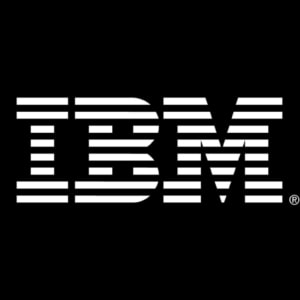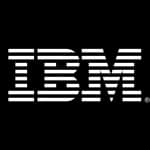Description
At SIXE we have been providing official IBM training around the world for over 12 years. Get the best training from our specialists in Europe. We have important discounts and offers for two or more students.
Course details
| IBM course code: F247G | Category: IBM Case Foundation / Case Foundation |
| Delivery: Online & on-site** | Course length in days: 4 |
Target audience
- A Workflow System Administrator is responsible for day-to-day operations of a production IBM Case Foundation workflow application.
- A Workflow System Administrator is typically required to help workflow participants to do the following tasks:
- Locate work and complete workflows.
- Respond to management decisions that require changes to work items.
- Gather information about workflow activity to help management make business decisions.
- During the production phase, the Workflow System Administrator manages operation of the workflow application and communicates with users and managers. In the workflow application deployment phase, the Workflow System Administrator coordinates activities with the Workflow Author to plan and control workflow application implementation into the production environment.
Desired Prerequisites:
- Familiarity with Windows 2008 operating systems.
- Familiarity with Java and Java Virtual Machines.
- General knowledge of relational database management systems.
- General knowledge of P8 Platform security concepts.
- General workflow terminology:
- Workflow
- Workflow definitions
- Queues
- Rosters.
- Start a P8 Platform system.
- Familiarity with P8 Platform administration interfaces, including:
- Administration Console for Content Platform Engine
- IBM Content Navigator
Recommended training path:
- F230 IBM Case Foundation 5.2.1: Introduction
- F247 IBM Case Foundation 5.2.1: Administration
Instructors
The great majority of the IBM courses we offer are taught directly by our engineers. This is the only way we can guarantee the highest quality. We complement all the training with our own materials and laboratories, based on our experience during the deployments, migrations and courses that we have carried out during all these years.
Added value
Our courses are deeply role oriented. To give an example, the needs for technology mastery are different for developer teams and for the people in charge of deploying and managing the underlying infrastructure. The level of previous experience is also important and we take it very seriously. That is why beyond (boring) commands and tasks, we focus on solving the problems that arise in the day to day of each team. Providing them with the knowledge, competencies and skills required for each project. In addition, our documentation is based on the latest version of each product.
Agenda and course syllabus
Configure the workflow system
- Workflow system concepts
- What is a workflow system?
- What is the purpose of a workflow system?
- Workflow system components
- Connection points
- Isolated regions
- Understand a workflow system and its function.
- Identify the components of a workflow system.
- Create and configure a workflow system to support FileNet workflow applications.
- General properties of a workflow system
- Runtime Options
- Language Packs
- Web Applications
- DbExecute Connections
- Remote Servers
- Isolated Regions
- Fine-tuning the workflow system
- Create and configure an isolated region.
- Create a connection point and isolated region.
- Create isolated region objects.
- Create and configure Queues.
- Create and configure Rosters.
- Create and configure Event logs.
- Create and configure Application Spaces.
- Expose data fields.
- Expose data fields to queues and event logs.
- Define indexes for queues and rosters.
- Create an index.
- Configure queues and event logs to use the index.
- Create and configure in-baskets and roles.
- Create and configure an in-basket.
- Create roles.
- Add in-baskets and members to roles.
- Configure Content Navigator for workflow.
Create a desktop.
Create a repository for the connection point.
Configure the desktop for workflow.
Configure the desktop to open Process Designer and Process Tracker.
- Configure a web application and step processor.
- Configure a web application.
- Deploy a step processor.
- Configure a step processor.
Security
- Security overview
- Layers of security
- Object store security
- Isolated region security
- Workflow system security groups
- In-baskets
- Application spaces
- Roles
- Avoid security conflicts
- Security configuration
- About isolated region security
- Control access to queues
- Control access to rosters
- Control access to rosters: recommended practice
- Roster and queue security settings
- How to configure queue and roster security
Maintain the Workflow System
- Use administrative tools for maintenance
- Maintaining a workflow system
- Administrative tools for the Workflow system
- Administration Console for Content Platform Engine
- Lock an isolated region
- Workflow system component administration
- Process Administrator
- Start Process Administrator
- Process Services Ping page
- System Dashboardvwtool
- Logging systems
- Monitor with the Process Services Ping page
- Process Services Ping Page
- Process Services Ping Page: Overview
- Process Services Ping Page: URL
- Ping Page: Log file location
- Ping page: Helpful links
- Sample: API Stats
- Monitor with System Dashboard
- What is System Dashboard?
- Why use System Dashboard?
- Dashboard Terms (1)
- Dashboard Terms (2)
- System Dashboard Structure
- Create clusters to view data
- Use the Dashboard views
- Execute options for Listener node and view data
- Archiving Manager
- Configuration Guidelines
- Process counters to watch (examples)
- Monitor with vwtool
- Use vwtool to monitor an isolated region
- Start vwtool
- Obtain status information on workflow system
- Run loadstatus
- Report memory usage, database usage
- Report version and system configuration
- Maintain event logs
- Event tools
- Event architecture1
- About event loggingView event logs
- View events with New Workflow Search
- View events with Process Administrator
- Event log maintenance guidelines
- Select event log options
- PELog
- Troubleshoot the workflow system
- Troubleshooting overview
- Support resources
- Collecting data
- For Process Clients issues: fnlog4j.properties
- Fnlog4j concepts
- Enable fnlog4j
- Two trace methods both use log4j
- vwtool trace log options
Manage Work in Progress
- Search for work
- Process Administrator
- Search options
- Viewing workflows and work items
- View and customize search results
- Ways to refine a search for work
- Use exposed fields in searches
- Use the Criteria tab to filter a search
- Search user queues
- View workflow history in Process Tracker
- Modify work
- Reasons to modify work
- Tools for modifying work
- Work item status
- Locking work
- About workflow properties
- Modify data field values
- Modify workflow groups
- Open workflow or work item in Process Tracker
- Modify an attachment reference
- Considerations for modifying work
- Process and manage work
- Tools for processing and managing work
- Ways to complete work items
- Assign or reassign work to participants
- Terminate work
- Delete work
- Designate a substitute participant
- Unlock work
- Add and remove trackers
- Manage workflow exceptions
- About workflow exceptions
- Conductor queue
- Get information about workflow exceptions
- View the information stack
- Modify workflows and work items
Component Integration
- Component integration concepts
- Purpose of component integration
- Component integrator
- Component Manager Frameworks
- Deciding on a Component Manager Framework
- Component behavior
- Types of components
- Java adapter
- JMS adapter
- Create and configure component queues
- How to create and configure component queue
- Procedure: Create and configure a component queue
- Create a code module
- New Component Queue wizard
- Adapter properties
- JAAS credentials
- Configure the Java Message Service adapter
- What is a queue operation?
- Elements of an operation
- Operation parameters
- Import Java component queue operations
- Define JMS component queue operations
- Stopping and starting component queues
- Diagnosing Component Manager issues
Appendix
- Appendix A. Start and Stop System Components
- Appendix B. Solutions to exercises
- Appendix C. Checkpoint solutions
- Appendix D. Checkpoint solutions
- Appendix E. Solutions to exercises
- Appendix F. Troubleshooting
Do you need to adapt this syllabus to your needs? Are you interested in other courses? Ask us without obligation.
Locations for on-site delivery
- Austria: Vienna
- Belgium: Brussels, Ghent
- Denmark: Cophenhagen
- Estonia: Tallinn
- Finland: Helsinki
- France: Paris, Marseille, Lyon
- Germany: Berlin, Munich, Cologne, Hamburg
- Greece: Athens, Thessaloniki
- Italy: Rome
- Louxemburg: Louxembourg (city)
- Netherlands: Amsterdam
- Norway: Oslo
- Portugal: Lisbon, Braga, Porto, Coimbra
- Slovakia: Bratislava
- Slovenia: Bratislava
- Spain: Madrid, Sevilla, Valencia, Barcelona, Bilbao, Málaga
- Sweden: Stockholm
- Turkey: Ankara
- United Kingdom: London





